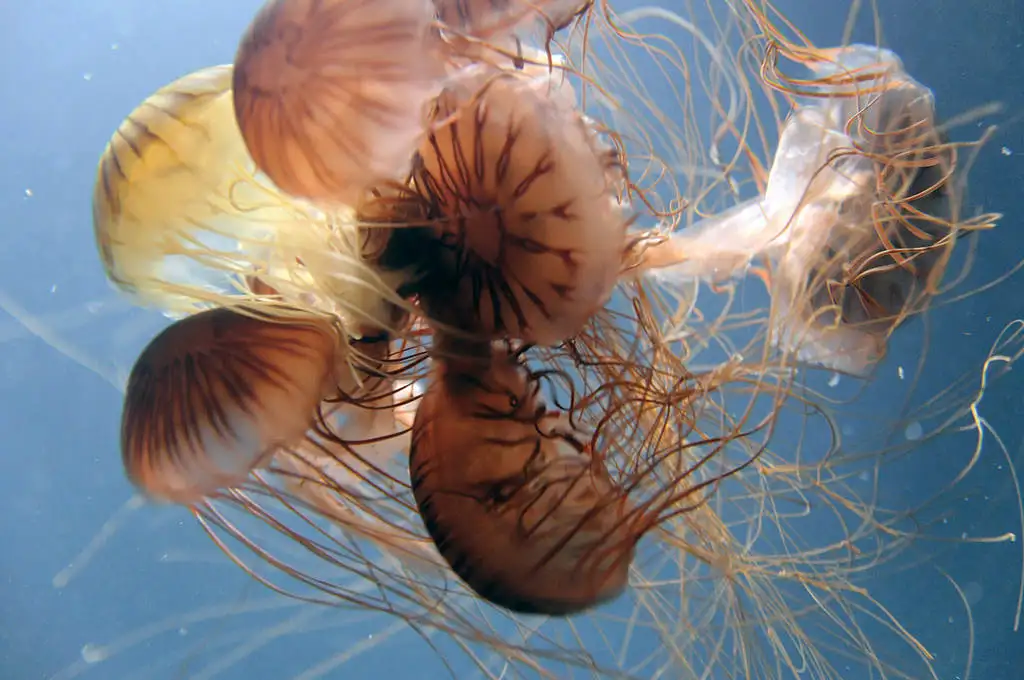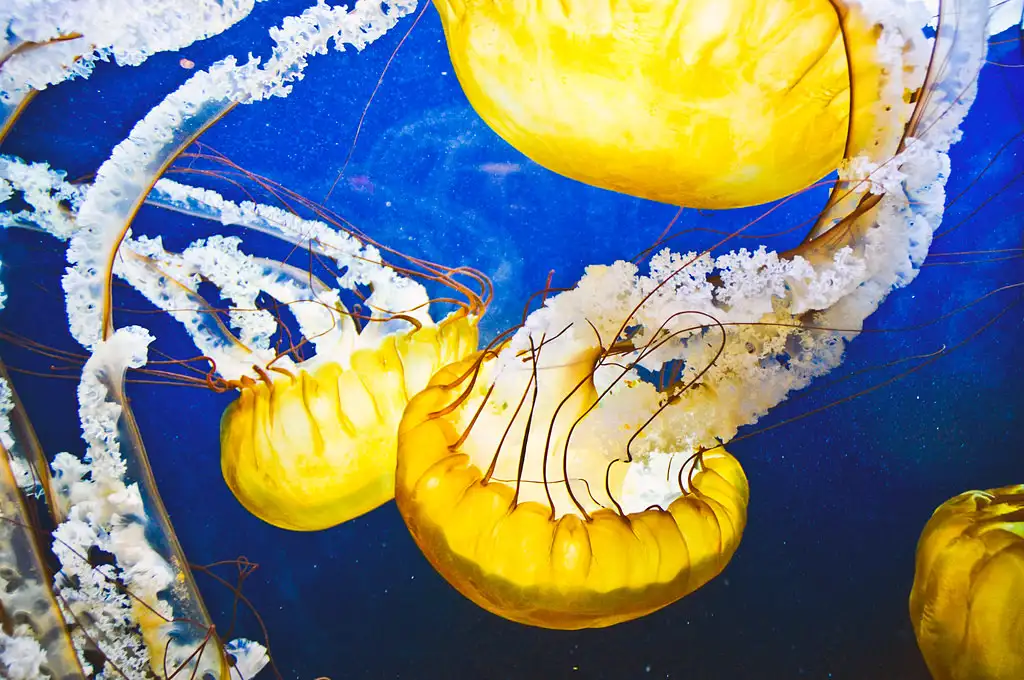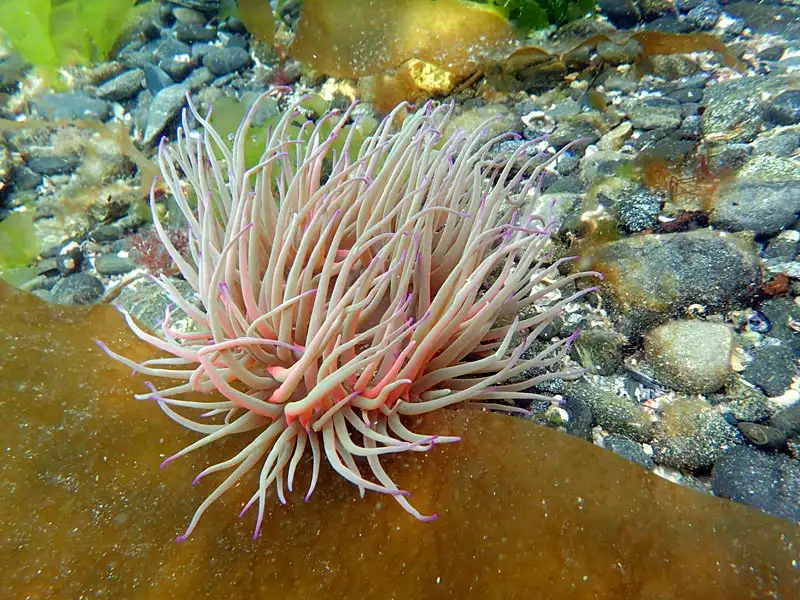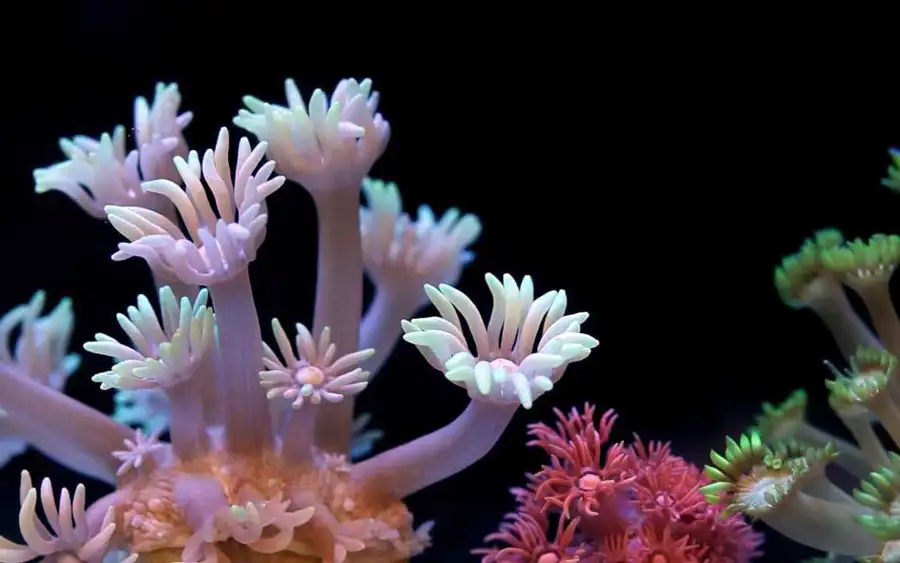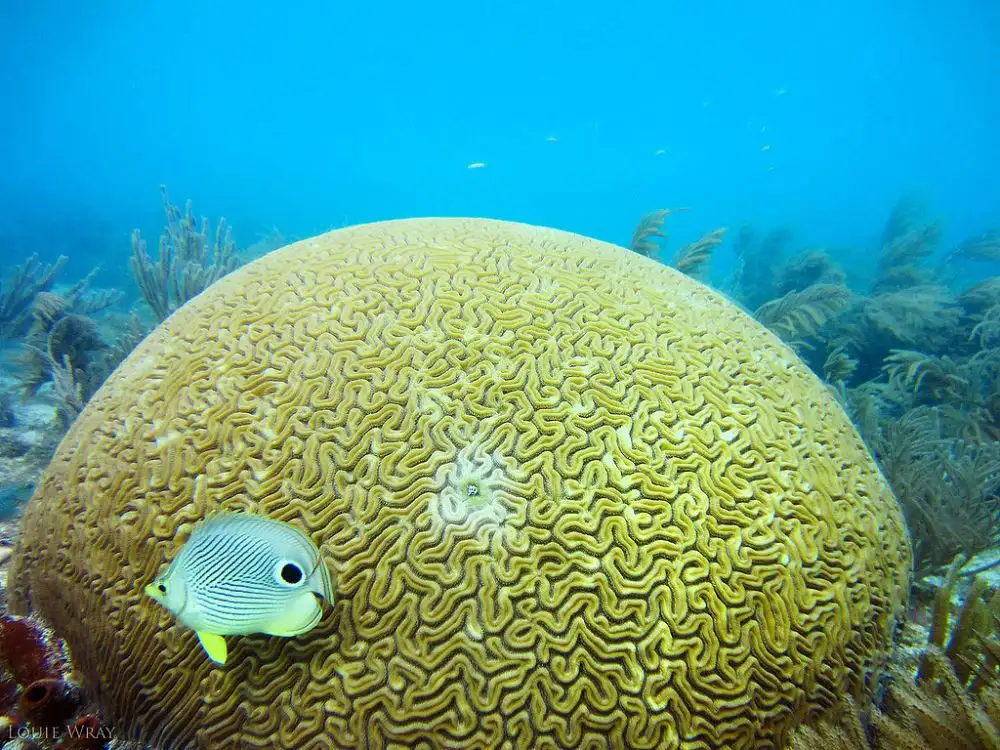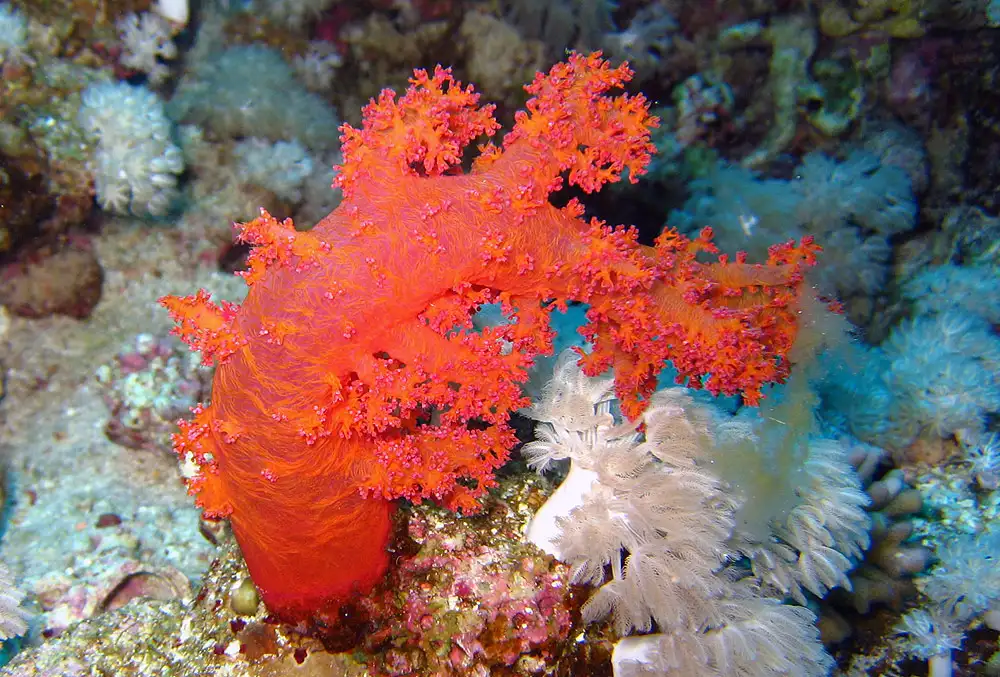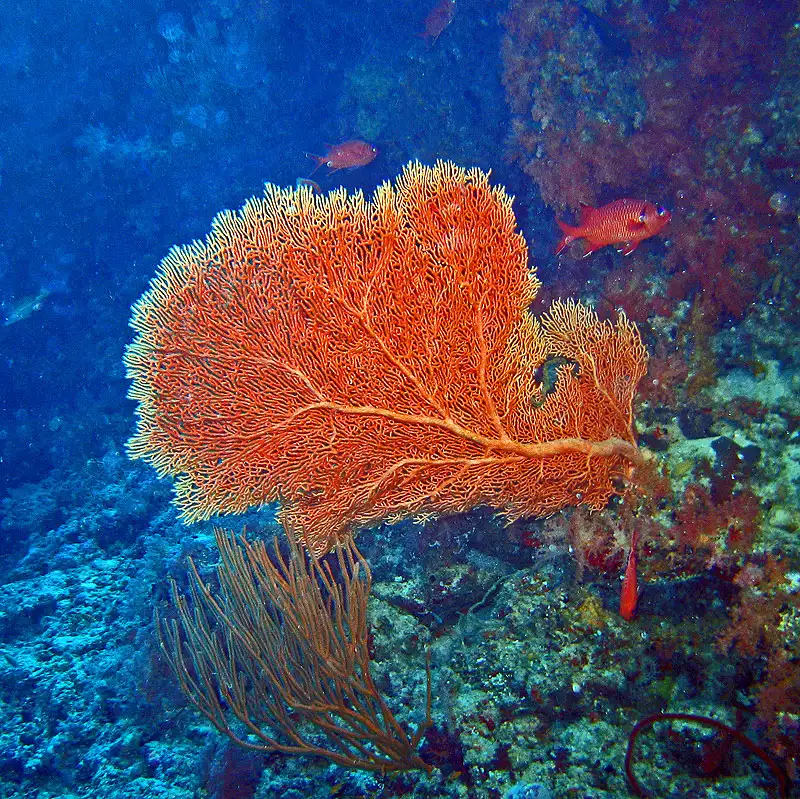Scyphozoa (True Jellyfish · Overview)
IUCN
LCBasic Information
Scientific classification
- name:Scyphozoa (True Jellyfish · Overview)
- Scientific Name:Scyphozoa
- Outline:Echinodermata
- Family:Cnidaria Scyphozoa
Vital signs
- length:Bell diameter from a few cm to 1 m+ (species‑dependent)
- Weight:Water‑rich gelatinous tissue; highly variable
- lifetime:Medusae months–years; polyps years with episodic budding
Feature
Medusa‑dominated life cycle; nematocyst feeding; some zooxanthellate; seasonal blooms in many regions.
Distribution and Habitat
Global—estuaries, shelves, open ocean and deeper water masses.
Appearance
Gelatinous bell with four‑part symmetry tendency; oral arms, marginal tentacles and sensory organs.
Details
Scyphozoa—the true jellyfish—are cnidarians whose life cycles are dominated by the free‑swimming medusa stage. Most species also have a benthic polyp (scyphistoma) that reproduces asexually by strobilation, releasing ephyrae which grow into medusae. They are key planktonic predators and vectors of energy through marine food webs.
Ecology & Biology
Feeding: zooplankton (copepods, chaetognaths, fish eggs/larvae), small fishes and marine snow; tentacles and oral arms carry nematocysts.
Locomotion: swimming via bell pulsation while drifting with currents; many show seasonal blooms.
Symbiosis: some warm‑water taxa host zooxanthellae, gaining photosynthate.
Reproduction: typically dioecious; planula settles to a polyp that later strobilates to release ephyrae.
Identification
Gelatinous bell with a tendency toward four‑part radial symmetry; prominent oral arms, marginal tentacles and sensory structures (statocysts/ocelli). Colours range from transparent to milky or shades of pink, yellow and brown; tissues are water‑rich and delicate.
Size & Longevity
Bell diameter: from a few centimetres to 1 m+ depending on species.
Life: medusae usually live months to years; polyps can persist for years and bud episodically.
Range & Habitat
Worldwide—from estuaries and coastal shelves to the open ocean and deeper water masses; many prefer eutrophic or retention‑prone systems.
Ecological & Human Interactions
Roles: regulate zooplankton, feed fishes/turtles, and contribute to vertical carbon flux as sinking “jelly‑falls”.
Impacts: stings to humans; blooms can clog intakes and affect fisheries/tourism.
IUCN: this is a class‑level overview; conservation is species‑specific. Marked here as Not Evaluated (NE) for this entry.
FAQ
Q1. First‑aid for stings? Rinse with seawater—not fresh water; remove tentacles; vinegar helps for some taxa; seek medical care if needed (educational only).
Q2. Do all jellyfish sting? Potency varies widely; avoid touching unidentified species.
Q3. Why do blooms occur? Linked to temperature, nutrients, currents, predator changes and human activities (fisheries/coastal works).
Q4. What’s the polyp stage? A benthic scyphistoma that can strobilate and release ephyrae.


